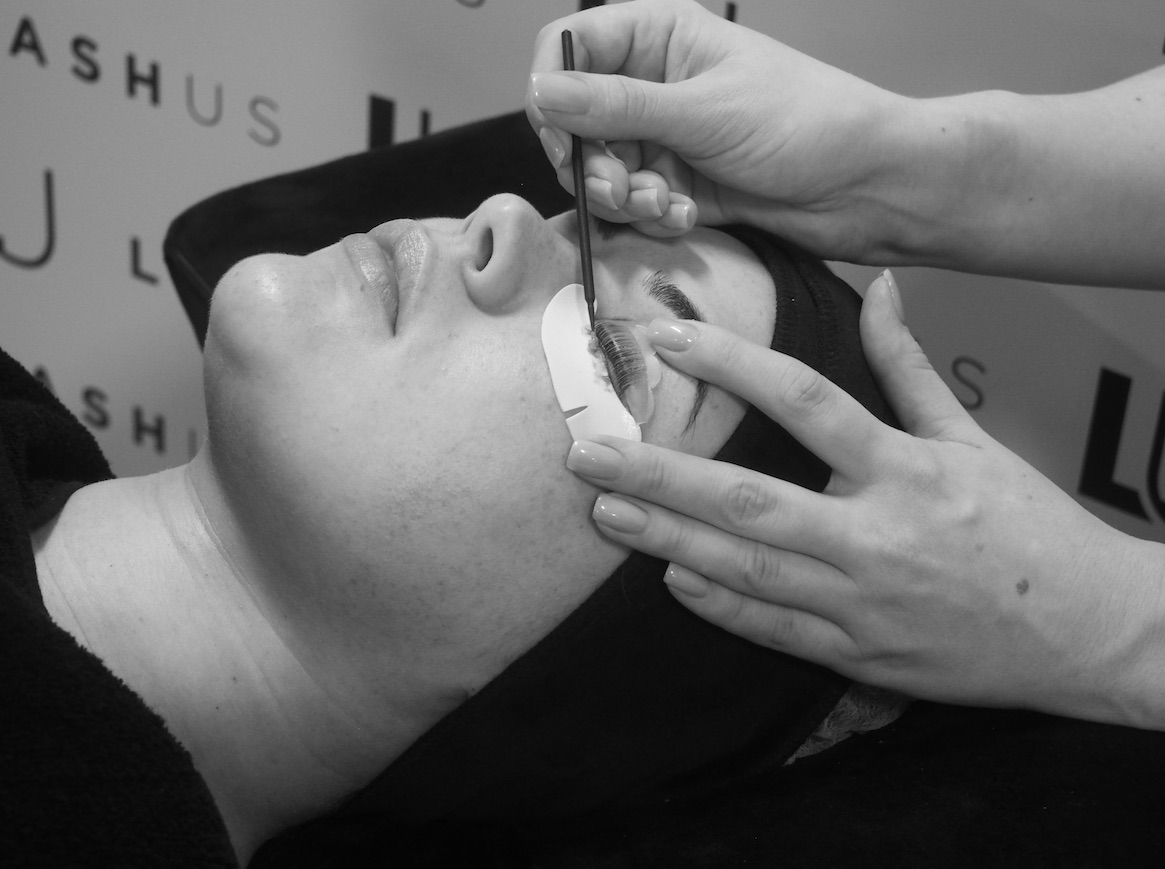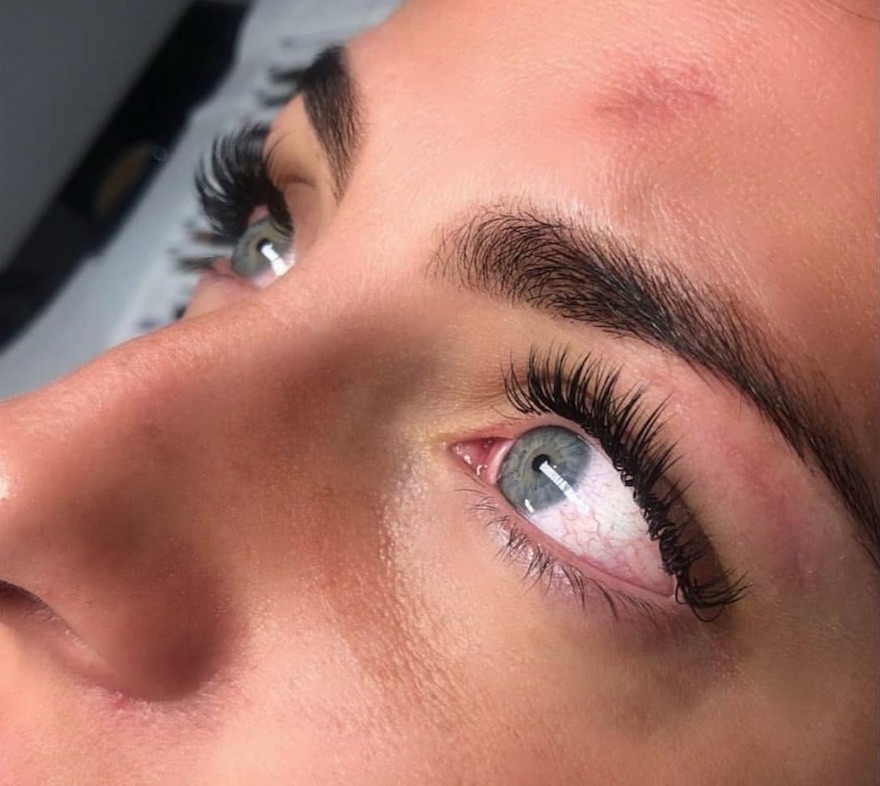Lashes are big business for salons and freelance therapists. We ask the industry's leading names how to achieve perfection in both lash extension and lash lift methods by troubleshooting the key issues lash artists can face.
1. Sticking together
“The most common problem I encountered when first learning lash extensions, and the one I now find students struggle with, is classic lashes sticking together, or the volume fan closing after placement,” says Lash Extend UK educator Hannah Robertson. “The way to overcome this is to ensure you have an even coverage of adhesive on the false lash or fan initially.”
If you have thicker adhesive at one end of the lash, or a bead of adhesive in one place, it won’t dry at the same speed, she explains. “There may then be some spots, which you can’t see, that aren’t dry enough to let go or move on.” When placing the false lash to the eyelash, Robertson recommends holding it in place until the adhesive changes from shiny to matte before moving on to the opposite eye.
“Another tip is to apply approximately four to six lashes or fans to one eye, evenly spaced, starting from one corner of the eye to the other and then move onto the opposite eye,” she adds. “This will help to ensure that by the time you go back to the place you started, the adhesive will have had enough time to dry and you can avoid the problem of lashes sticking together.”
2. The shakes
After completing lash training, it can be daunting working on “real” clients and it is normal to be nervous at first. New lash techs may also take longer to complete a set of lashes and, until they get into their stride, can find themselves having to hold a set of tweezers for hours on end during lash enhancements. This can lead to unsteady hands, which, in turn, can cause problems as they try to isolate lashes.
“Lash isolation is the foundation to any lash extension service and if this isn’t done right nothing else will work,” says Lisa Stone, lash expert and Salon System educator. “It is imperative a technician can isolate an individual natural lash and some often struggle with this at first. It takes a lot of practice and repetition to get this right but there are some tips you can follow to make it easier.
"To steady the hand, lightly rest it on your client’s forehead and allow the tips of tweezers to rest gently on the eye patches to give support and stability. Keep your hands relaxed and don’t tense or grip your tweezers too tightly. I’d also try out different tweezers. What works for one person may not work for another, so make sure the ones your choose feel comfortable.”

Image: Salon System Marvelash lash treatment
3. Eye irritation
Sometimes clients complain of an allergy to extensions, whereas the irritation can actually be caused by poor technique. “Redness of the eye after the application of lashes can be due to the gel patches being too close to the skin and this is often mistaken for an allergy,” says Natalie Piper, lash expert and business development manager at The Eyelash Design Company, which distributes Lash Perfect. “This can be avoided by ensuring that the protective under-eye gel patches are not too close to the water line of the eye. If the client’s eyes are swollen 24 hours after the treatment, this can also sometimes be mistaken for an allergy.
“However, it can be due to sensitivity to the lashes if one or two small lashes are too close to the skin, causing swelling or irritation. This can be solved easily by checking the lashes carefully and ensuring that lashes close to the skin are removed.
“Testing is not essential for lash extensions as none of the products touch the skin, but if a client is very sensitive to many products, and is concerned about irritations or allergies, I’d suggest placing one or two extensions on the natural lash as a ‘sensitivity test’. If there is no irritation after 24 hours, then more lashes can be applied.”
4. Dirty lashes
Clients can show up to appointments wearing eye make-up, including waterproof mascara. Yet, any form of product residue on the lashes when the client comes for extensions or lifting, be it mascara, lash serums or make-up remover, can cause real problems. Spending 20 minutes trying to remove waterproof mascara will also eat into your treatment time. This can be resolved by giving clear pre-treatment advice when the client books, and being firm but fair with those who choose not to listen.
“If clients complain of lash lifts not working or extensions ‘sliding off’ it is usually down to oil on the lashes,” says Anne Perry, elite Eyelash Emporium educator. “Prior to the treatment, clients need to be told to stop using lash serums, waterproof mascara and oily products around the eye area at least 72 hours before their treatment. If they use micellar water or any type of wipes, they should be made aware that both have oil in them.
“Make a point of double cleansing before each eye treatment and rinse off well so there is no residue left on the lash. Manage your clients and start from day one with a fair policy – if they come in with dirty lashes it will take you extra time, so they either choose less lash time or pay for extra time.”

Image: Lashus lash lift treatment
5. Roaming eyes
“We love to talk to our clients when they come in and during consultation, but when I’m working on a client, once they’re lying down and prepared, I will say ‘now it’s time for your free lash nap’,” says Jacki Clarke, one of Lashus’s lead educators. “When a client talks, the brain is ticking over. This causes the eyelids to flicker a lot, which can move the pad. I have had a few students really struggle with this, regardless of the treatment.”
She adds: “If there’s a lot of talking during a lash lift treatment, it can be a struggle to get the lashes onto the shield. Whereas, if a client is chatty during extension application, it can be difficult working with really sharp tweezers and trying to isolate one lash when your client’s eyeball is moving around underneath the lid. You have to remember that clients can have up to 300 lashes on one eye so it can become really difficult for the tech or trainee tech.”
Dawn Grant, Lashus’s other lead educator, suggests creating a relaxing playlist for use during the extension or lifting process. Clients can then lie back, relax and enjoy their ‘lash nap’. “We even suggest not having too much coffee on the day of the treatment. Although techs may initially feel nervous asking clients not to chat, they will understand if you explain it will yield the best results.”
6. Temperature trouble
Humidity changes the viscosity and curing speed of your lash adhesives, so although it may seem like a good idea, keeping them in the fridge during a heatwave is a definite no-no, explains Debbie Law, Nouveau Lashes educator and international trainer. “Get your hygrometer out and take a reading, then choose your adhesive according to the exact humidity in your treatment room,” she advises.
“For example, Nouveau Lashes Pro 10 adhesives dry more slowly in high humidity, while SVS adhesive and Pro X5 dry faster than normal. If you only ever use one preferred adhesive, you’ll need to play around with the amount you use – preferably not on a client, though!”
Another tip Law suggests is to give your adhesive bottle a vigorous shake for two minutes before your first treatment of the day, then shake it again for 10 seconds just before each treatment. “On high-humidity days, try to get more adhesive on each extension by increasing your dipping speed. That should help slow down the curing time,” she adds. “When humidity is low, do the opposite. Also, hold your lashes in place a bit longer than you normally would and that should prevent any sticky situations.”
Sun and heat can also impact on lash lifting treatments. “Sun has a negative impact on LVL lifting balm,” says Law. “So, keeping the product anywhere that is exposed to direct sunlight is not advised. Buy a big bag of rice, bury it inside and stash it out of sight in the coolest, darkest place possible in your treatment room.”

Image: Lash eXtend treatment
7. Natural lash damage
Traction alopecia can occur when extensions are too heavy or too long for the natural lashes. “With trends like ‘lash-mapping’ or ‘mega volume’ lashes, this is all too familiar”, says Christina Barham, who distributes Novalash in the UK and Ireland. “However, it is a common myth that eyelash extensions ruin clients’ natural lashes.
With proper application, technique and aftercare, lashes can, and should, last four to six weeks. This respects your client’s natural lash cycle, with lash extensions shedding when the natural lash is ready to fall out.”
Clients can still have full and thick lashes, but it is important that lash artists select appropriate lengths, and thicknesses, to keep the client’s eye health and safety their top priority. Teaching your clients the correct aftercare will also help protect and respect the natural lash and this includes the use of suitable professional products.
“Suggest clients buy a lash wand brush so that they can comb their lashes daily to prevent ‘clumping’,” says Barham. “Use of a cleanser designed specifically for extensions will not only remove dirt, pollutants and any make-up your clients wear safely, it will also prolong the life and radiance of their extensions and natural lashes by conditioning and restoring moisture and reduce flipping and tangling of the lashes, while simultaneously nourishing the eye area.”
8. How to avoid underselling my services
“It seems like everyone is doing lashes and prices are getting cheaper and cheaper,” says Kristina Shepherd, chief executive and founder of Kent-based 27 Two 6 Beauty and KSLA Professional, a lash education and product company. “Some lash technicians are doing sets for £10 and, while they may be busy, it’s not a good business plan to work for such little money if you want to make a profit and grow.”
“By the time you take out what you pay yourself, rent, product cost and overheads, you are left with very little, and this is not a sustainable business. Do you want to work 12 hours a day, seven days a week for OK money, or do you want to work part-time hours for full-time pay? It’s something to think about because it depends on how you market your business to your clients.
“When setting your prices, don’t worry about what everyone else is doing. Focus on yourself instead,” recommends Shepherd. “What courses have you taken? How often do you update your knowledge? How good are your sets? How bespoke can you make your service – or does everyone walk out looking the same? Which glue, primers and aftercare products do you use, and do you know how to map or work with layers and curls? This is what you should be factoring in when setting prices, not what the lash technician down the road does.
“Focus on your target client, who they are and what their priority is. Is it the quality of their finished lashes they want, or the price? Aim your business, including prices, social media posts and the lashes you create at your target client. You will also put clients off if you’re too cheap, and cheap lashes will never be good lashes because of the cost and time it takes to be skilled enough to create them.”
She adds: “Make sure you review your prices each year, factoring in any bills that have gone up, such as gas, electricity, staffing or product cost increases.”
Lead image: ©M&Co



